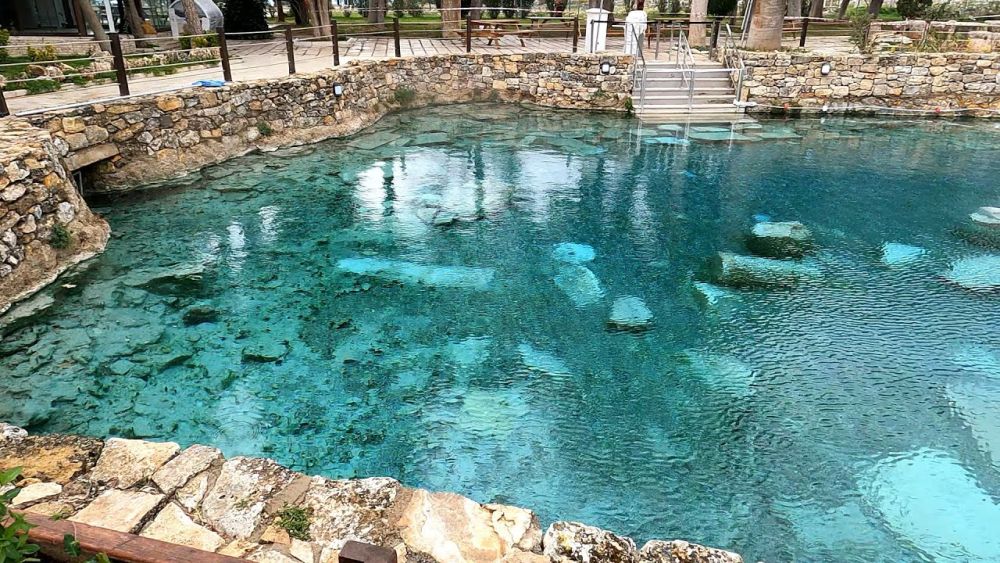

Tourism in Pamukkale, a site famous for its natural thermal waters, has a history that stretches back to antiquity. Known as the Cotton Castle, thanks to its unique white travertine terraces, Pamukkale has been a wellness destination for thousands of years. Nestled within this enchanting landscape is Cleopatra's Pool, also known as the Antique Pool, steeped in legends and rich historical significance.
According to lore, Cleopatra's Pool was a gift from Marc Antony to Cleopatra, who believed the waters had restorative properties. The therapeutic benefits of the mineral-rich waters have been touted since the Greco-Roman era, leading to the development of the ancient city of Hierapolis around the site. The ruins of this city, which include a theater, a necropolis, and the ancient Temple of Apollo, tell of a past where these waters were sacred and integral to the culture and health of its inhabitants.
Modern tourism began to emerge in the late 20th century when the value of preserving Pamukkale's pristine beauty became evident. In 1988, Pamukkale was declared a UNESCO World Heritage Site, cementing its status as a place of historic and natural wonder. This declaration brought global attention and an increased number of visitors, eager to witness its other-worldly landscapes and take a dip in the reputedly healing waters of Cleopatra's Pool.
With the rise of tourism, conservation efforts became paramount. Structures such as hotels, which were adversely affecting the natural terraces, were removed, and a comprehensive water management system was implemented to preserve the thermal pools. These measures ensured that future generations could enjoy the beauty of Pamukkale and the historic allure of Cleopatria's Pool.
In recent years, there has been a shift towards sustainable and experiential tourism. Visitors are now encouraged to explore the region with a more eco-conscious mindset, taking care to respect the fragile travertine terraces and the remaining Roman ruins. Wellness tourism continues to thrive as individuals seek out the restorative experiences reputed at Cleopatra's Pool, as well as other activities like paragliding off the cliffs of Pamukkale for a bird's eye view of the majestic site.
The introduction of virtual reality experiences at historical sites is a trend gaining popularity worldwide, and it is no different at Pamukkale. Tourists now have the opportunity to see what the ancient city of Hierapolis might have looked like in its prime, adding depth to their visit.
Whether for its rich history, the purported health benefits of its mineral waters, or its natural beauty, Cleopatra's Pool in Pamukkale continues to be a shining example of how the intersection of history and nature can offer a timeless travel experience.